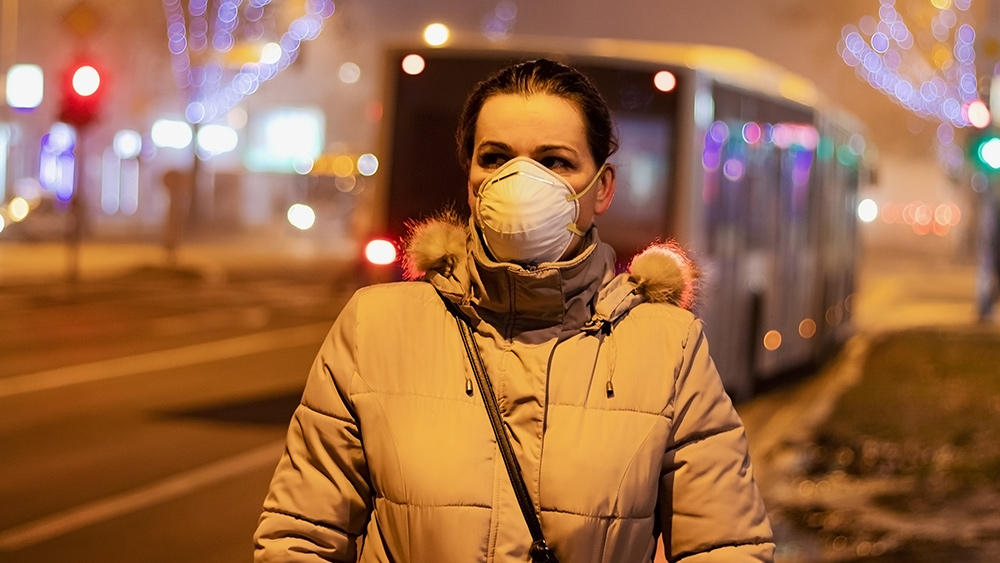
A news release by the agency stated that people who do not wear masks “could be liable for the new recommended fine of $50,” starting on Nov. 2. The New York Metropolitan Transportation Authority implemented a similar rule in September, with commuter rail, subway and bus riders who refuse to wear a mask being fined $50.
Since the onset of the pandemic in March 2020, the Port Authority has used posters, public service announcements and other means to “make travelers aware of the health and safety protocols” in place. It has also focused on asking riders to “mask up” to help protect employees and their fellow commuters. An Oct. 22 tweet by the agency showed the correct way of wearing a mask and exhorted patrons to ensure that their face coverings are properly worn. Nevertheless, the agency reiterated that it “will continue to put primary emphasis on voluntary compliance.”
The Port Authority operates five airports: John F. Kennedy, LaGuardia and Stewart in N.Y., and Newark Liberty and Teterboro in N.J. It also operates three bus terminals and the Port Authority Trans-Hudson (PATH) train system spanning both states.
Fines part of both states’ efforts to stop the spread of the coronavirus
The agency’s new order follow efforts by the two states to prevent a second wave of coronavirus infections. New York City alone has reported almost 24,000 deaths due to COVID-19 – about two-thirds of the state’s total casualties. Meanwhile, New Jersey officialse warned of a rise in COVID-19 cases across the state.
New Jersey Gov. Phil Murphy expanded the state’s quarantine travel advisory list Oct. 27. This list mandated that travelers from 41 states and territories to quarantine for two weeks after returning – even if their travel route started there. Murphy’s expansion of the travel advisory followed his seventh extension of the state’s public health emergency on Oct. 23
The states of Delaware, Connecticut and Pennsylvania were not included in Murphy’s travel advisory list due to the interconnected nature of the region. The governor said that a 14-day quarantine for travelers from the three states is “not reasonable,” but dissuaded Americans from doing non-essential travel to the areas.
Fines seen as alternative to problematic mandatory mask orders
The agency seemed to have taken cues from an incident in May over a passenger’s refusal to wear a mask properly. New York City Police Department (NYPD) officers reminded 22-year-old Kaleemah Rozier and her 5-year-old son to wear their face masks correctly before entering the Atlantic Avenue-Barclays Center subway station. Rozier and her son were wearing masks, albeit not covering their noses and mouths.
Instead of simply fixing her and her son’s masks, Rozier responded to law enforcement with vulgar language and refused to comply with polite requests. She even threatened to cough on the police and slapped an officer’s hands. At this point, the officers decided to take her to the ground and handcuff her. Rozier was charged with disorderly conduct, harassment and resisting arrest, but her arrest prompted a change in the NYPD’s regulations – law enforcement was no longer allowed to take people into custody for not wearing masks.
With the new fines, the agency looks to avoid incidents such as this as those who don’t wear masks will no longer face arrests, and will just be fined instead.
The Port Authority’s $50 fine for not wearing a mask in its transport terminals is a drop in the bucket compared to the fines in other countries. For example, Singapore levies s S$300 (US$220) fine on anyone who does not wear a mask when going outside their homes. Succeeding violations will merit a S$1,000 (US$733) penalty, with serious offenders facing prosecution.
Data from Johns Hopkins University shows that the U.S. has the highest COVID-19 caseload at 8.8 million, with 227,700 fatalities and 3.5 million recoveries.
Pandemic.news gives you the latest information about the ongoing coronavirus pandemic and health protocols in place across the globe to keep it at bay.
Sources include:
Please contact us for more information.






















